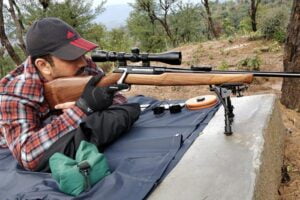
Practical Tips To Choose The Right Scope For Your Rifle
When choosing the right rifle for your needs, there are many factors to consider, whether long-distance hunting or simply shooting range antics. With that said, there are also factors to consider when choosing the right type of scope for your rifle. Using a sighting device such as a scope for your rifle can benefit your goals in various ways, but mainly by increasing shooting accuracy dramatically. The most suitable rifle scope can make a massive difference, even for beginners.
Scopes are also not only suitable for rifles, as they can be used for shotguns and a few other types of firearms as well. However, rifles are the more popular option. And these practical tips will help you pick out the best scope with absolute ease.
Weight Is Impacted By Tube Diameter
Recently, 30 and 34mm tube bodies have become pretty popular, even though larger and heavier than other options. The higher diameter of these tubes impacts weight, although it also allows for bigger internal parts, which can better manage light. Therefore, the larger diameter scope tubes are generally more robust than the standard 1-inch options. As a result, your first consideration when choosing a scope must be the diameter of the rifle scope.
If your hunt will incorporate long hikes or you need to keep your optics compact for other reasons, smaller scopes are suitable. On the other hand, larger rifle scopes are best for long-distance shots with absolute accuracy. You will also need to look at rifle scope mounting rings that match the diameter of your chosen rifle scope.
There are a few factors to consider when choosing the best tube diameter for a rifle scope:
- Reticle type: Some reticles, such as mil-dot reticles, require more internal space than others. If you plan on using a reticle that requires a lot of internal space, you must choose a scope with a larger tube diameter.
- Eye relief: Eye relief is the distance between the scope’s eyepiece and your eye when you’re looking through it. A scope with a larger tube diameter will typically have more eye relief than a scope with a smaller tube diameter. This is important if you wear glasses or have a long eye relief.
- Light transmission: The larger the tube diameter, the more light can pass through the scope. This is crucial if you plan on shooting in low-light conditions.
- Price: Scopes with larger tube diameters are typically more expensive than smaller ones.
Which you pick is all a question of your needs. You can ask the experts for advice on what to look for in AR 15 scopes and others to avoid wasting your time and money.
The Exit Pupil
The exit pupil plays a significant role in low-light performance. You can determine the exit pupil by dividing the objective lens diameter by the scopes magnification. A suitable hunting scope should provide at least a 4mm exit pupil. This will result in less magnification and a more accurate shot even over exceptionally long distances.
Don’t Over-Adjust
Over-adjusting can lead to an increase in perceived issues. Even though having a scope with various adjustable options might seem like the fancier option to go for, this isn’t always the case. The more adjustable rifle scopes are better suited for lousy mounting techniques.
You can tell you’ve over-adjusted your scope when:
- Your shots are not grouping together.
- Your shots are hitting too high or low from your target.
- There’s blurring.
- The scope itself feels loose.
Start small when you make adjustments and be patient. Better yet, talk to a gunsmith or optician to get it checked. High-quality scopes usually remove the need for constant adjustment.
Consider Your Budget
More often than not, your budget will dictate most of your choice when purchasing a scope. So, as a last determining factor, you should consider your budget. If you can afford high-end large-scope options for your rifle, there’s no reason not to give yourself the extra optical precision. On the other hand, if your budget is somewhat restricted, it might be best to consider saving for the most suitable option or buying a scope that suits your budget while enhancing your optical abilities at least a little bit.
Scopes are available in various sizes, and each offers multiple unique functions. However, it’s generally best to start with a simplistic rifle scope that won’t require too much effort to figure out as a beginner. Once your abilities improve, you can venture off and try out more extensive rifle scopes with more functions and adjustable options.

